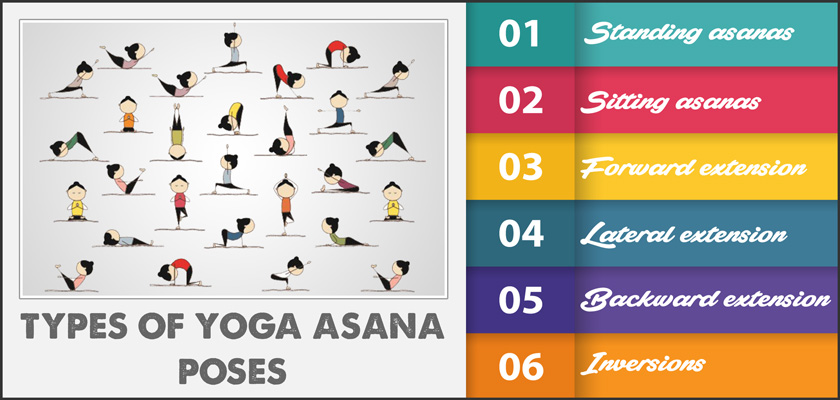
Types of Yoga Asanas and Poses
Posted On : 22 April 2017.
Posted By : Yogi Mahesh Chetan.
Yoga poses can be pretty overwhelming if you wander into a class. If you have a sports background, you may be familiar with some stretching poses during warm-up and cool-down. Here, we will look at the 6 basic types of asanas practised in yoga and their benefits.
Standing asanas (Utistha Sthithi)
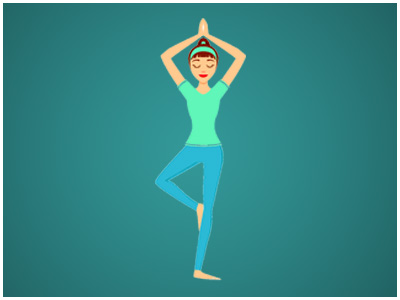
Standing poses break the body's lazy (innate) nature and bring activeness to the practitioner. These poses also correct a person's structure and posture by improving the sense of balance. It forces the practitioner's body to enhance proper weight distribution. It's also a foundation for most of the yoga asanas. Standing asanas build base intelligence for other poses, strengthening the body and improving stamina. The active nature of the poses stimulates the body and creates heat.
Sitting asanas (Upavistha) stithi
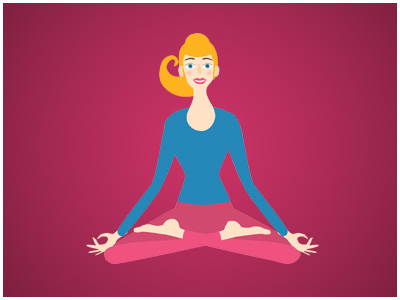
These are introduced after the standing asanas as they give rest and reduce strain on the legs. They create freedom in the knees, groins, ankles and foot movements. It's always better to work on the gluteus before attempting forward extension, as the origin of action in forward extension is in the gluteus area. The pain in forward extension can be from lack of movement in the gluteus. Doing standing and seated forward extension asanas to bring freedom of movement in the sacral, coaxial, and gluteus muscles can help improve flexibility.
Furthermore, wide-legged forward fold and triconasan are helpful poses to stretch the hamstring before attempting forward fold.
Forward extension (paschima pratana)
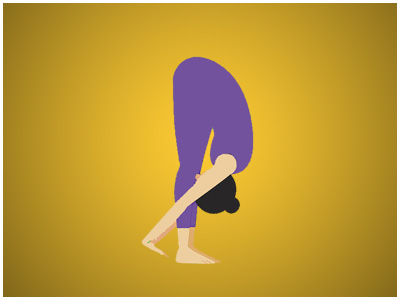
The heart faces the floor in all the forward extensions. This gives rest and helps one recover from fatigue. Forward extension also brings calmness and quietness to the mind. It's a passive pose compared to other yoga poses. This pose can build endurance and mental strength. If your mind is agitated, forward extensions could help calm it down.
Lateral extension (parivarta)
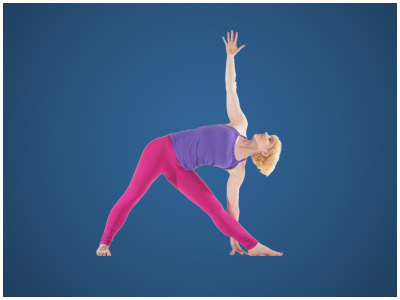
These asanas are introduced after achieving the concave and forward extensions of the spine. The rotational extension of the spine gradually brings it to a neutral position from forward and backward extensions.
Backward extension
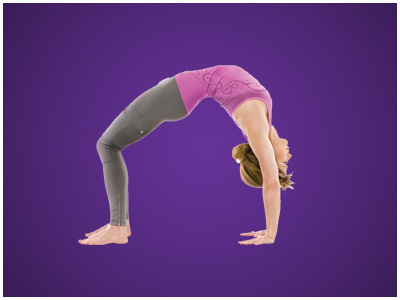
These poses should be introduced gently, with simple asanas such as downdog.
It's ideal for a down dog to be taught before the back extension to create freedom in the lumbar, sacral, and coaxial regions. In advanced backward extensions, freedom in the dorsal, lumbar and sacrum is the primary and essential requirement. The adrenal glands are activated/stimulated, opposite to forward extension.
Inversions
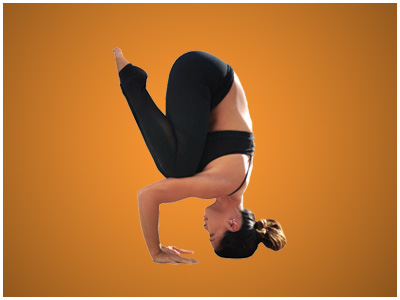
Inversions maintain the hormone balance. It also stimulates the pituitary and thyroid glands and maintains hormonal balance. The variations of headstand or supported headstand and shoulder stand are done along with the main asanas as inversions. Variations of shoulder stands and plough soothe the system, cool the body and relax the nerves. One cannot do the asanas, which activate or stimulate the body's mind, immediately after these asanas, as this may irritate the nerves and agitate the mind, breaking the inner peace.
One can, however, continue with forward, lateral or prone extension poses.
The process is reversed after the headstand. After the headstand, one can choose stimulating asanas such as standing asanas, backward extensions or other pacifying asanas.
Halasana, bridge or headstands are ideal to be taught before teaching handstands. Why is halasana (plough pose) thought of first? In halasana, one learns to balance and bear the body's weight on the shoulders. It brings freedom of the neck and shoulders, which paves the way to shoulder through one-legged shoulder stands. At this stage, one begins to sense and feel the inversions.
See also Yoga Teacher Training in India